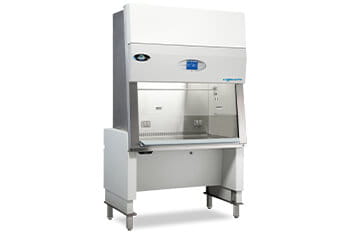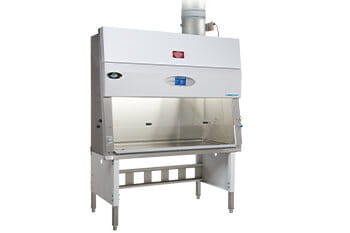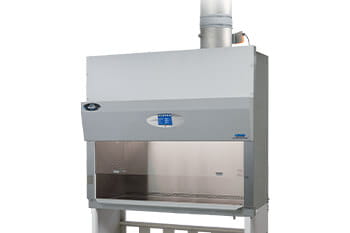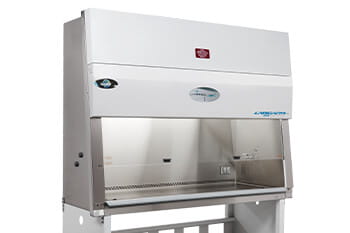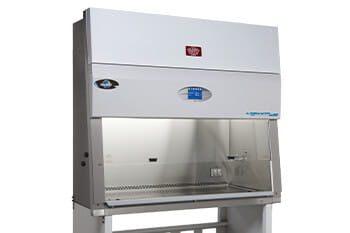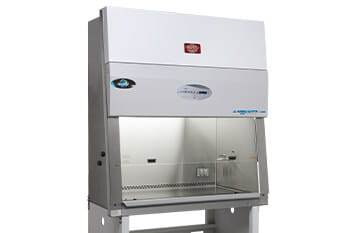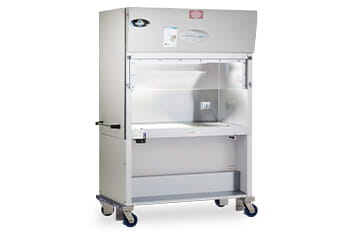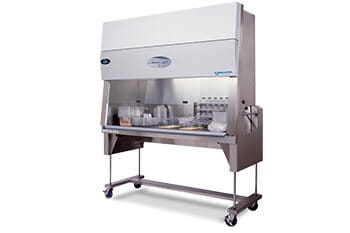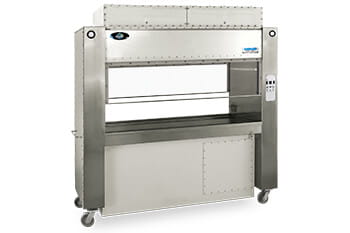
 Article
Article
Gas Decontamination in Biosafety Cabinets: Why, When, and How


Introduction: Beyond Surface Cleaning
Routine surface decontamination is a critical part of maintaining a safe lab environment. But there are times when surface cleaning just isn't enough. In certain situations, a full gas decontamination of your biosafety cabinet (BSC) becomes necessary to address contamination hidden inside HEPA filters, plenums, and blower assemblies. Learn more about effective surface decontamination techniques at NuAire.
When is Gas Decontamination Necessary?
Gas or vapor decontamination may be required in several scenarios, such as:
- Before replacing HEPA filters
- Prior to major internal maintenance or repairs
- After a significant biological spill or contamination event
- Before relocating, decommissioning, or salvaging the BSC
- When switching to different biological agents in the BSC
Many industry standards, including NSF/ANSI 49, recommend gas decontamination for BSCs used in BSL-3 and BSL-4 labs. If you're preparing for a move or installation, review our biosafety cabinet installation and design considerations.
Choosing the Right Gas Sterilant
Choosing the correct gas sterilant is a decision that should be based on your lab’s specific risk profile. Common sterilants include:
- Formaldehyde Gas: Effective and widely used, but classified as a human carcinogen and requires thorough neutralization.
- Chlorine Dioxide Gas: Fast-acting with strong penetration but requires precise humidity control.
- Hydrogen Peroxide Vapor (HPV): Safer to handle and leaves minimal residue, but may not be compatible with all materials.
It’s important to conduct a proper biosafety cabinet risk assessment before selecting a sterilant for decontamination.
Key Safety Considerations
Gas decontamination should always be handled by trained professionals following validated methods. Proper PPE, monitoring equipment, and thorough documentation are non-negotiable. Remember, while these sterilants are highly effective, they are also hazardous if mishandled. Formaldehyde, for instance, mandates specific neutralization steps and extended aeration periods.
For additional guidance on safe cabinet use, visit our Biosafety Cabinet SOP guide.
Best Practices After Gas Decontamination
Once a gas decontamination cycle is complete, it's critical to ensure the biosafety cabinet is safe and ready for future work. Here’s what you should do:
- Conduct a full airflow validation to confirm proper function.
- Recertify the biosafety cabinet following current NSF/ANSI 49 standards.
- Inspect all surfaces and components for chemical residues or material degradation.
- Document the decontamination event and any corrective actions taken.
Maintaining a validated and certified BSC after gas decontamination protects both personnel and research integrity. For everyday cleaning practices between major decontaminations, review our guide on surface decontamination in a biosafety cabinet.
Related Resources
- Biosafety Cabinet Risk Assessment
- Biosafety Cabinet Installation and Design Considerations
- SOPs: Biosafety Cabinet Use Guide
- Surface Decontamination in a Biosafety Cabinet
- When Work is Completed in the Biosafety Cabinet (Video)
Ready to dive deeper into best practices for gas decontamination in biosafety cabinets? Download our detailed white paper for a comprehensive guide, including:
- When full BSC decontamination is necessary
- Comparison of approved chemical sterilants
- Best practices for lab safety, certification, and compliance
Ensure your lab is prepared for every critical decontamination event. Get your copy today!



